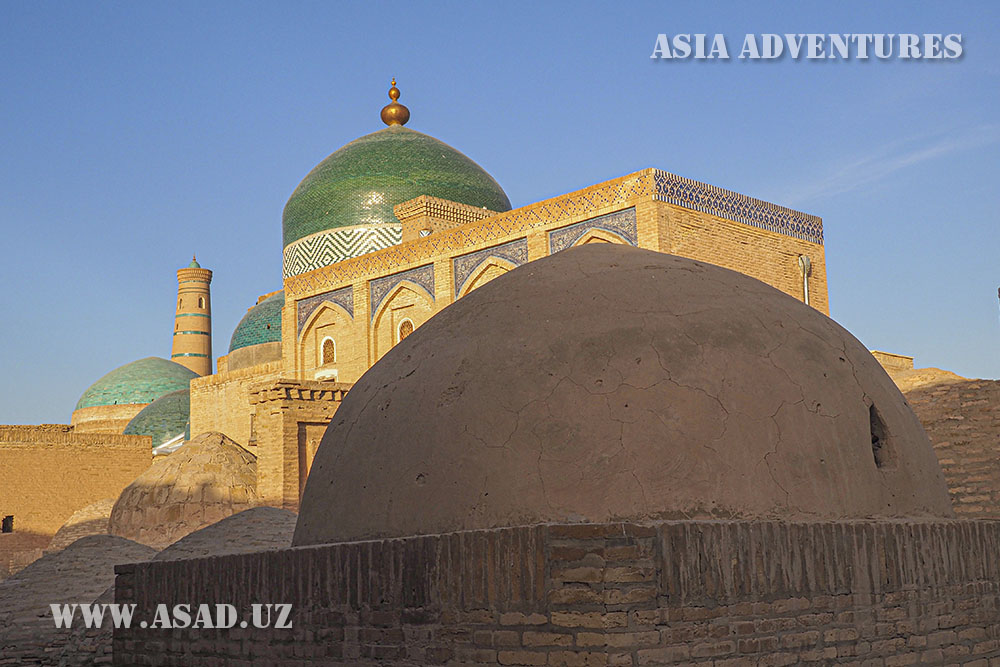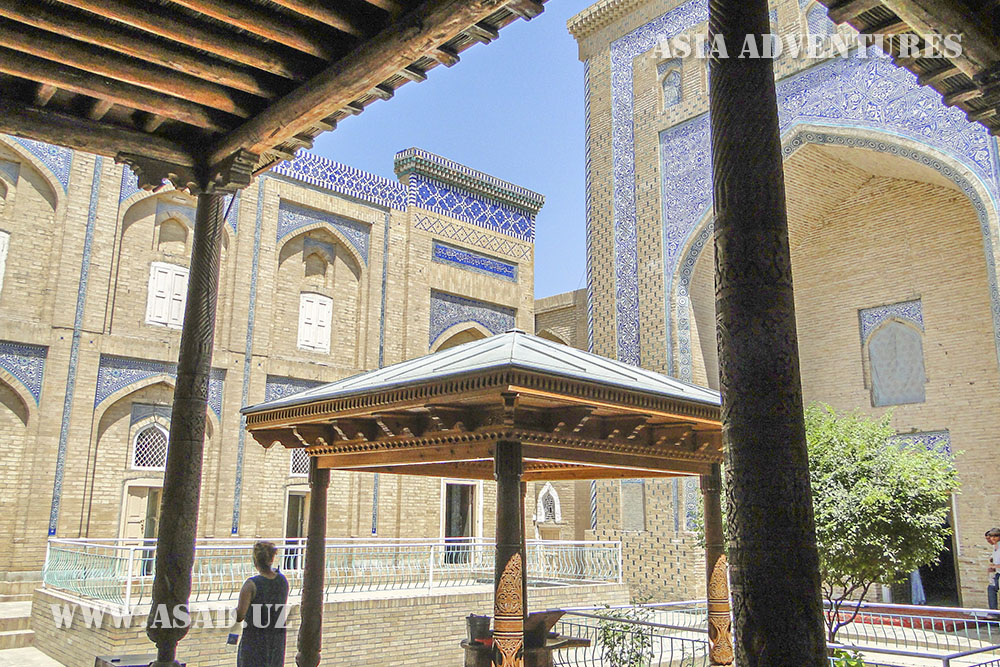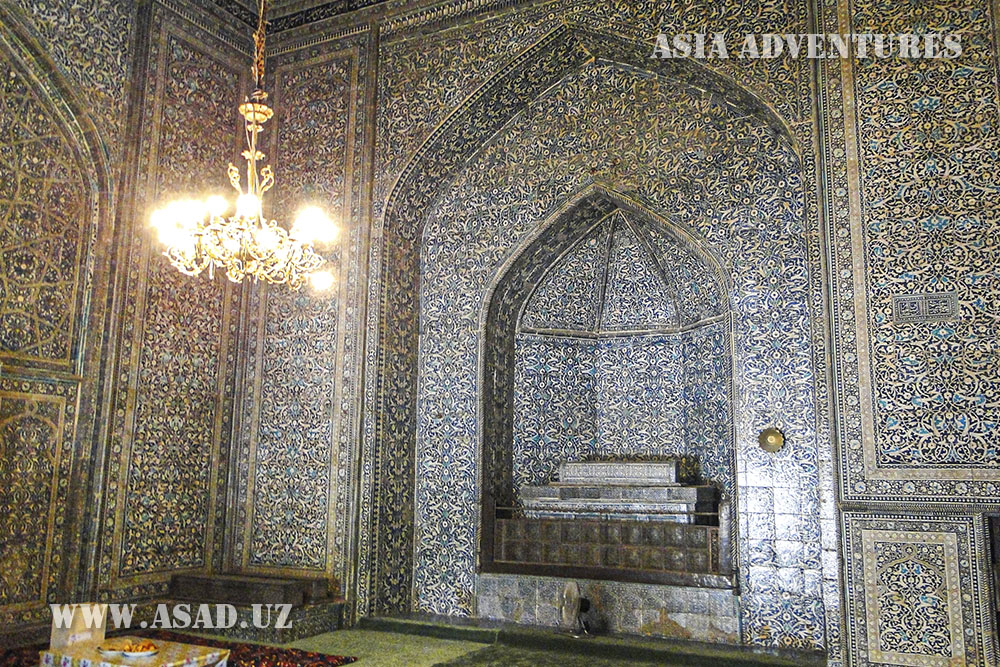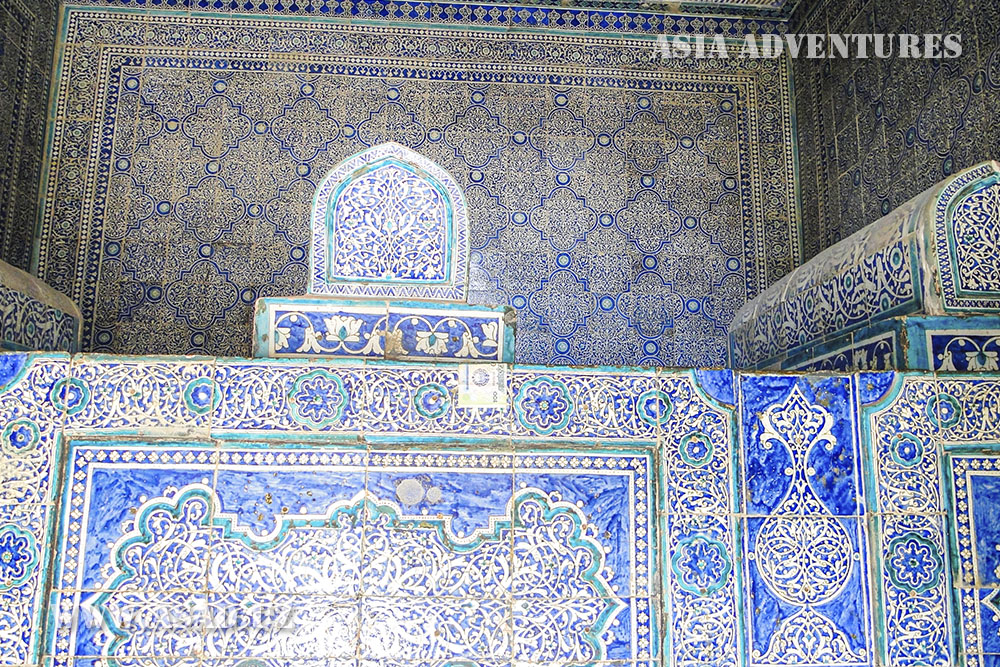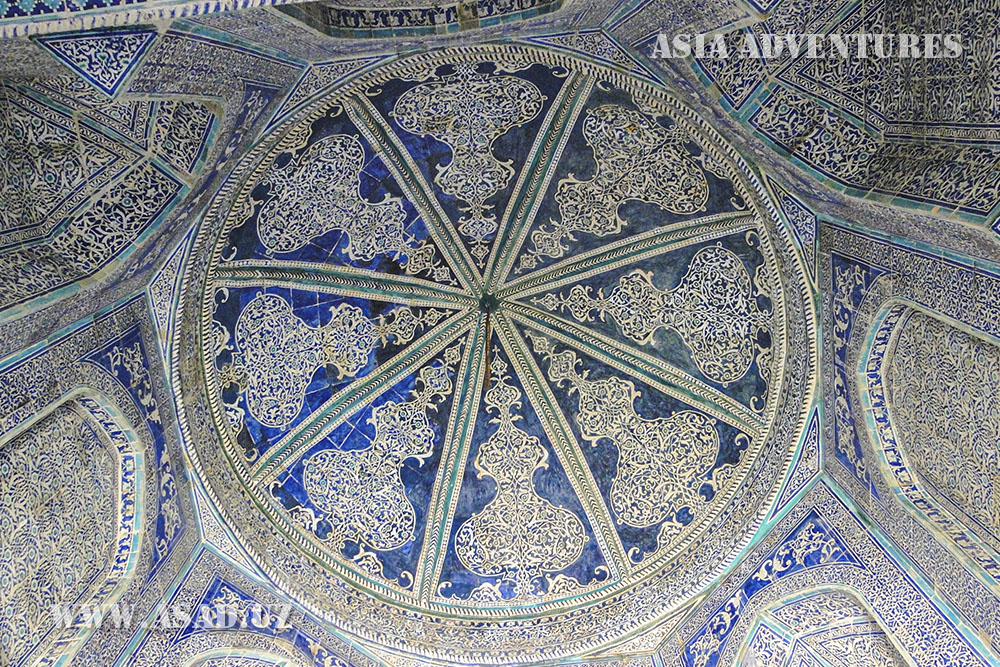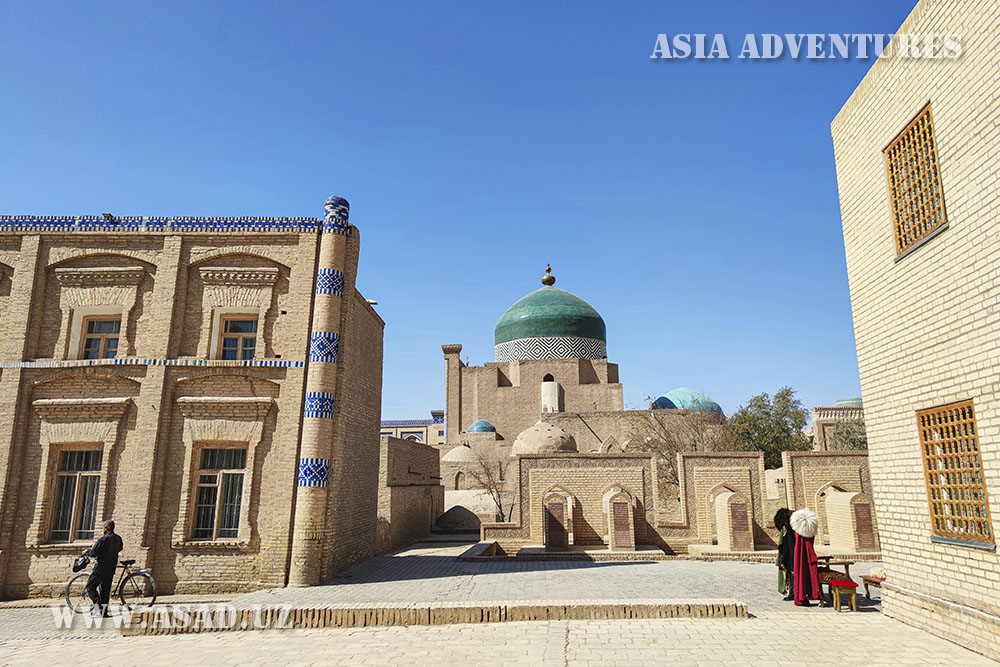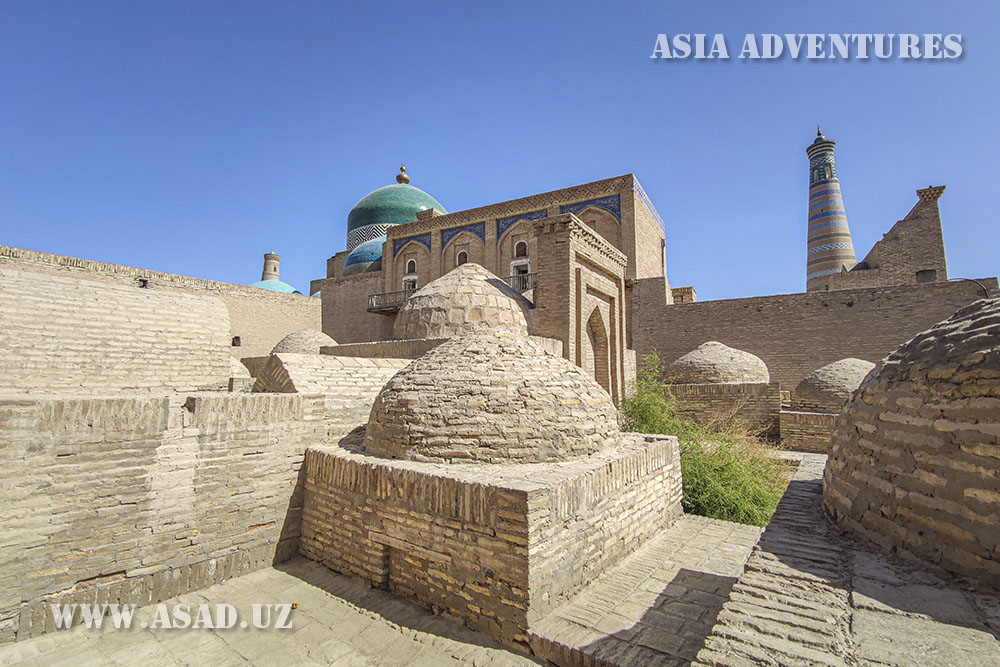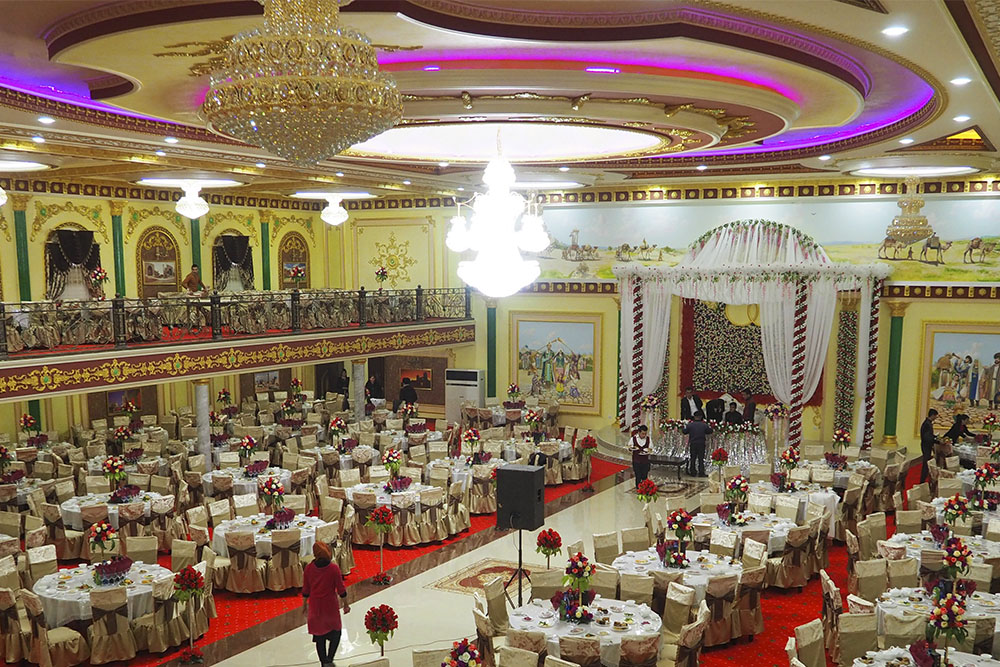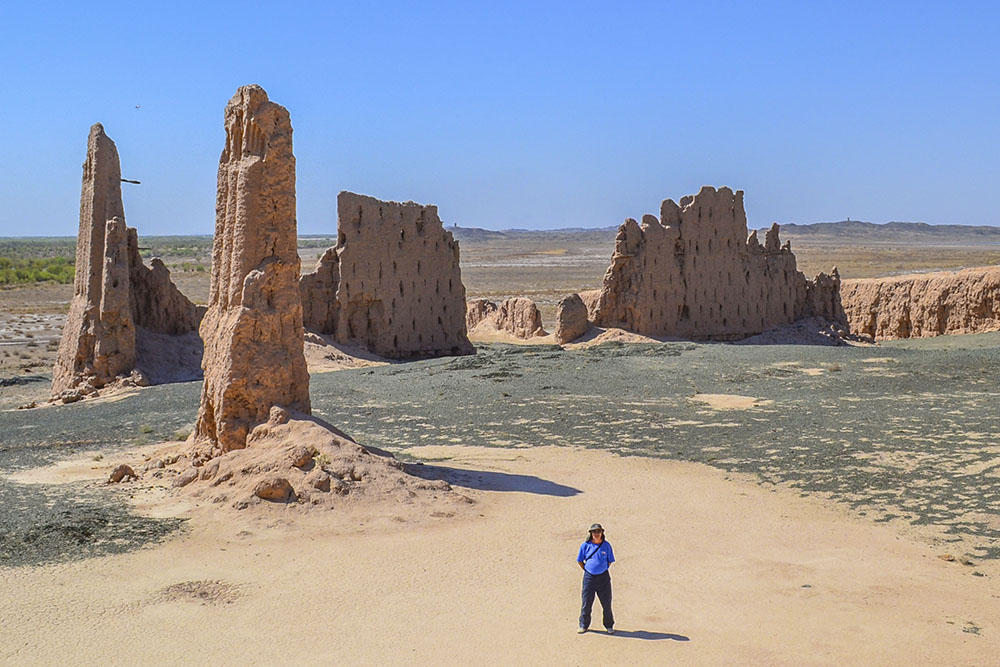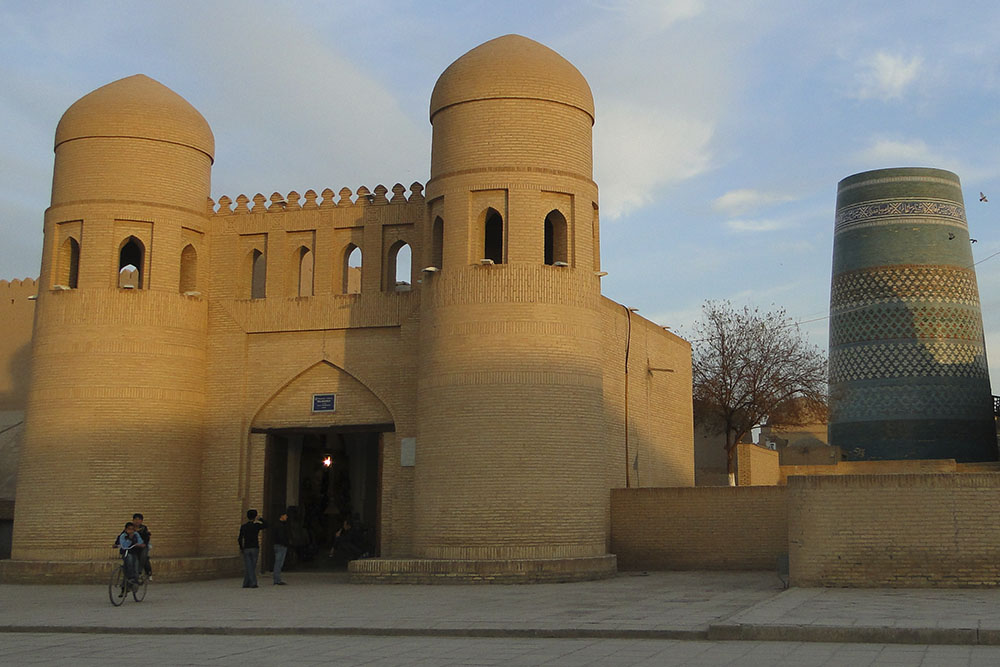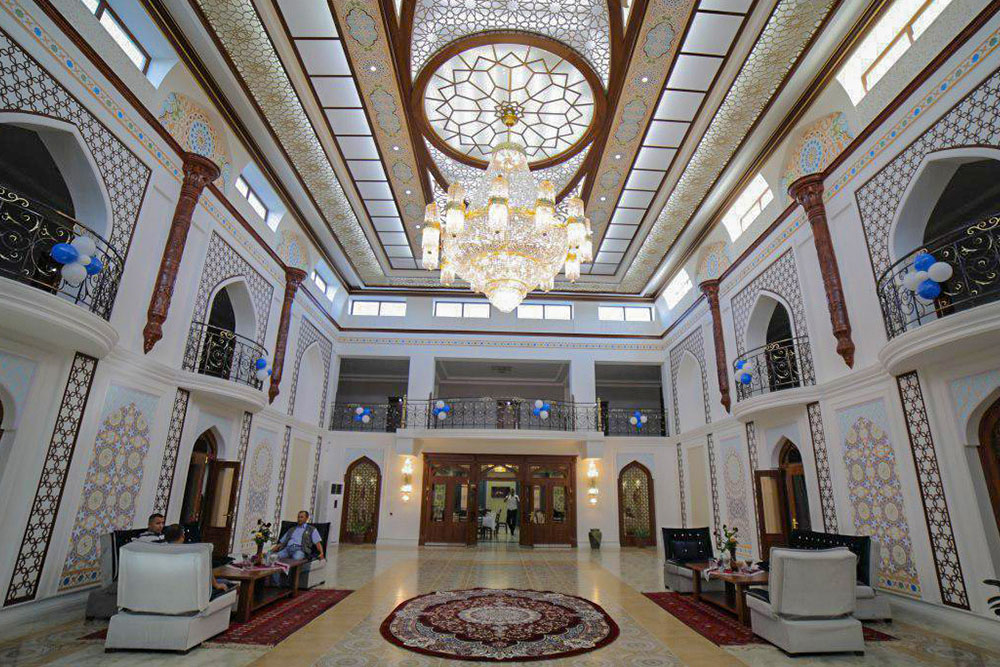Once, more than seven hundred centuries ago, in the XIII–XIV centuries, an extraordinary man lived in Khorezm, a man of powerful strength and sharp mind. Invincible Pakhlavan Mahmud (hero, wrestler). Despite the fact that he was a simple artisan furrier, the fame of his skill, strength, honor and bravery went far beyond the borders of Khorezm. After his death, he was revered as Saint Patron of the city.
When Pakhlavan Mahmud died, he was buried in the courtyard of his workshop according to his will. Many years later, in the XVII century, a small modest mausoleum was built on this site. Soon pilgrims began to come here, and a number of buildings were added to the mausoleum over the next centuries.
The mausoleum was rebuilt, decorated with the largest dome in Khiva, covered with blue glazed tiles, and a gilded top, it had a large arched entrance. Later, the mausoleum was faced with majolica.
And at the feet of the Saint Patron of the city, tombs of the rulers of Khiva khanate and their families were built. A khanaka, a mosque, a madrasah with living quarters for pilgrims, korihons for Koran readers, and aivans with carved columns in the courtyard appeared near the mausoleum.
The mausoleum of Pahlavan Mahmud and the complex of buildings are a vivid example of early Khorezmian architecture.
In the majolica lining, you can see words from the Koran, fragments from the works of Pakhlavan Mahmud, and the names of masters. An extremely beautiful Oriental pattern in blue-green-white tones adorns the interior of the tomb of this glorious extraordinary man, the guardian of Khiva.

 Centralasia Adventures
+998781506280
Centralasia Adventures
+998781506280
28, Mukanna str.
Uzbekistan
Tashkent region
100070



